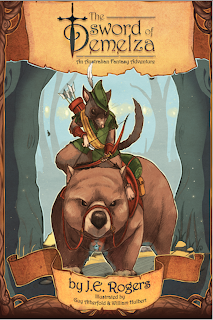BIRDS OF A FEATHER
There
are nearly 10,000 different species of birds on our planet. They are capable of
flying across vast expanses of ocean and have managed to colonize all of the
world’s surfaces except for the most desolate. I am sure you have your favorites,
and I have mine. We can do a blog post once a week for a very long time and
still not be able to talk about all the birds of the world. So this week I
thought we would focus on a very interesting species of bird, which comprises
just a small percentage of all birds. Meet the Kingfisher.
Common Kingfisher
The Common
Kingfisher is also known as the River Kingfisher and the Eurasian Kingfisher.
This is a sparrow-sized bird, with a large head, large beak, and a short tail.
There
are ninety different species of Kingfisher. Some of them are endangered. A few
are critically endangered. We can break them down into three groups, the river
kingfishers, the water kingfishers, and the tree kingfishers.
“The smallest species of
kingfisher is the African Dwarf Kingfisher, which gets to an average of .4 ounce
in weight and just 4 inches in length. The largest kingfisher species is the
Giant Kingfisher, which gets to an average of 13.5 ounces and grows to 18
inches.” (a-z-animals.com)
African Dwarf Kingfisher
Giant Kingfisher
Photo
credit: Gerrie van Vuuren
Kingfishers
are a carnivorous bird, dining on fish, frogs and insects. They have also been
known to eat reptiles, birds and even small mammals.
Meet the
Tuamoto Kingfisher. It is a very interesting kingfisher with unusual coloring,
and it is critically endangered. It is endemic to the island of Niau in French
Polynesia.
Tuamoto Kingfisher
Here’s a
map that will show you where French Polynesia is located.
Meet the
Guam Kingfisher.
We have
mentioned in previous blog posts that people have a very big impact on the
environment. The story of the critically endangered Guam Kingfisher is clearly
another example of how careless we can be, and how what we do affects life on
this planet. Although the Guam Kingfisher was never widespread, limited to the
island of Guam, it was doing just fine until we showed up during World War II
when we established a military base on the island. A lot of equipment was
brought onto the island, and something else arrived with us, the brown tree
snake. Unfortunately for the Guam Kingfisher, this snake dines exclusively on
birds. As a result, the bird population on Guam was devastated. The US
government is currently trying their best to save the Guam Kingfisher from
extinction. A very aggressive breeding program is taking place in several zoos
across the US, and removal of the brown tree snake from the island of Guam is ongoing.
With a population of less than 150 individuals, this program is critical, and
will hopefully be successful.
The Guam Kingfisher
Illustration credit: USGS (United States Geological Service)
We are
going to mention one more kingfisher, and it’s my favorite; the Kookaburra.
Yes, the Kookaburra is a member of the kingfisher family.
The Kookaburra
Young Kookaburra (Photo credit:
Author’s collection
The
above picture was taken at the Alice Springs Desert Park while I was
vacationing in and researching the animals of Australia. Although it is
considered a bit of a pest, the Australians are, nevertheless, very proud of
their Kookaburra and they have enacted laws to project it. It is an iconic
symbol of the country and is, I am happy to say, not endangered.
Photo credit: http://arkive.org
Their
call is referred to as a ‘laugh,’ and this video will explain why.
I hope
you have enjoyed this brief look at the Kingfisher, and that you have learned
something today. Perhaps you’ll be tempted to look up a few other kingfishers
yourself. Thank you for stopping by and please feel free to leave a comment and
to share my post.
Enjoy!
Jeanne
E. Rogers, Award Winning Author
The Sword of Demelza and The
Gift of Sunderland
Middle
Grade Fantasy Where Endangered Animal Heroes Roam the Pages!











This comment has been removed by a blog administrator.
ReplyDelete